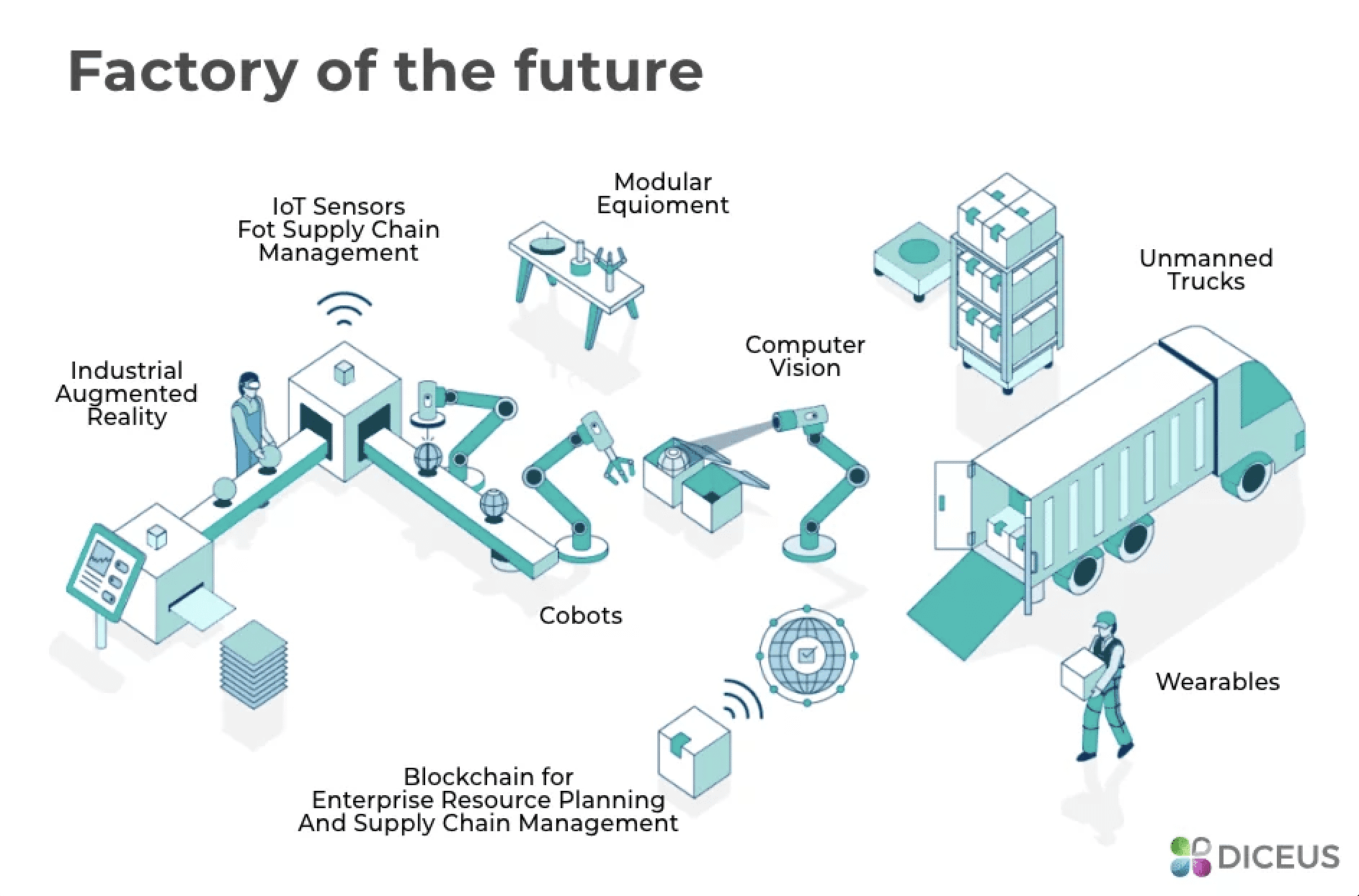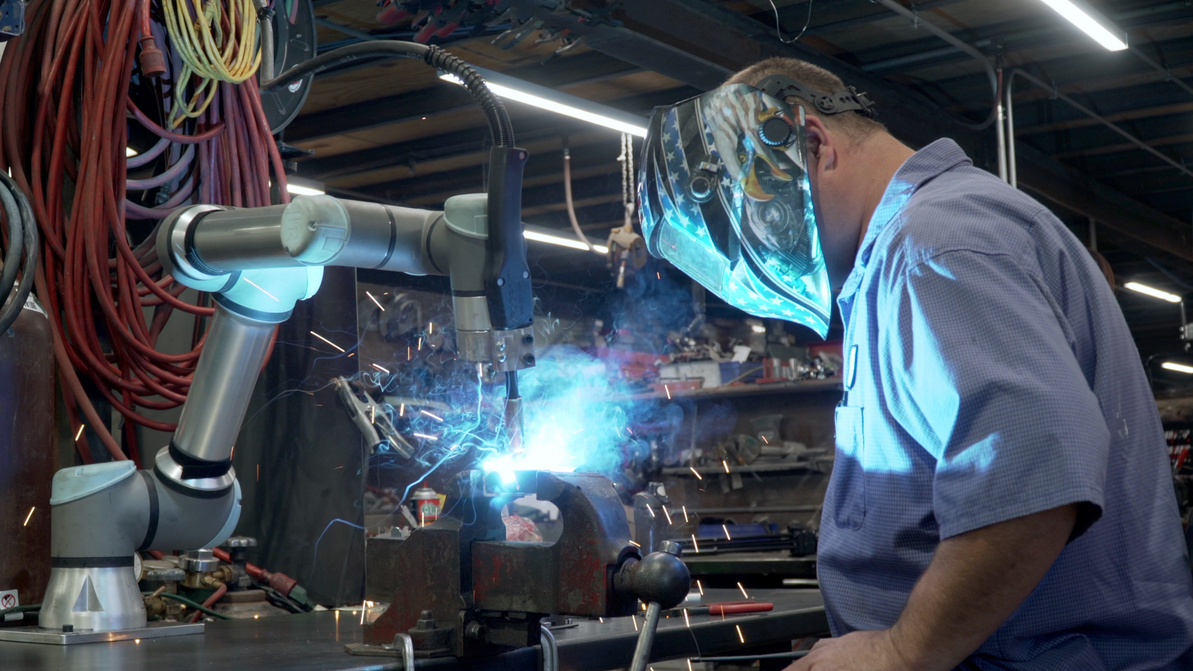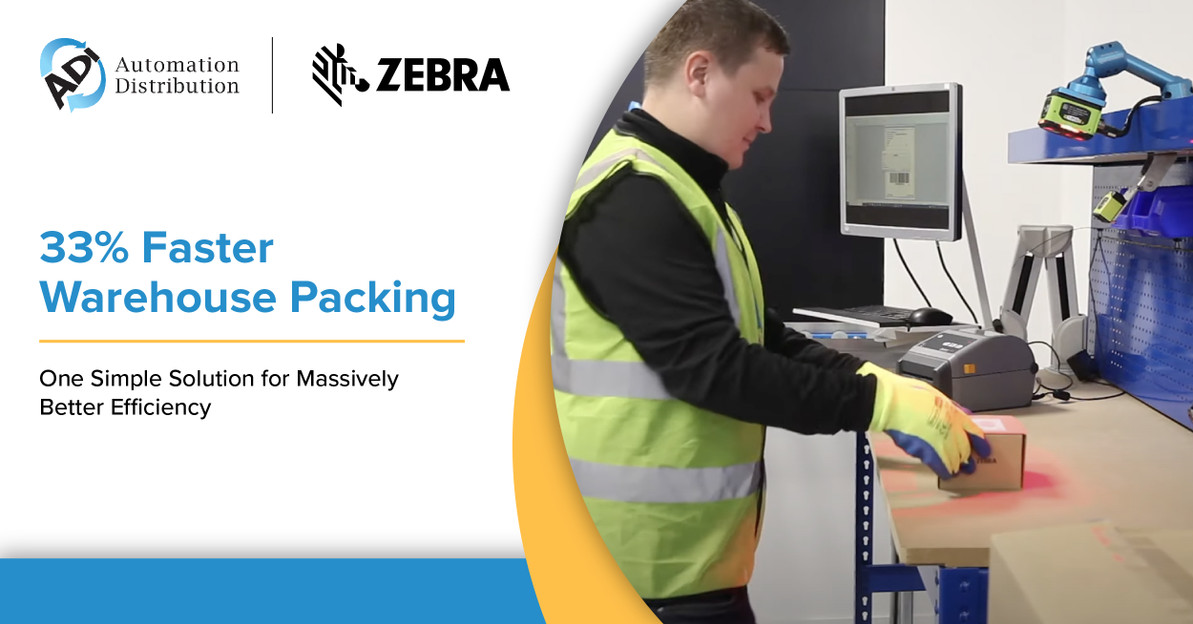5 Key Steps for Digital Transformation
Manufacturing is still feeling the effects of the COVID-19 epidemic, which has demonstrated how processes may be made more streamlined and effective. Automation is being stressed more, but primarily out of necessity owing to a shortage of competent labor. It is a significant factor in some of the changes that are occurring, but it is also due to the continued strong demand for produced goods. There is a lot of pushing and pulling going on, making it difficult for manufacturers to continue being productive and efficient. Beginning the road toward digital transformation and IIoT is the largest obstacle for many manufacturers.
When a company starts integrating new digital technology to enhance every part of the production process, it is said to be undergoing a digital transformation. Software applications and digitalization are the main drivers in this strategy, which can be used in a comprehensive or piecemeal manner.
Empowerment is a byproduct of the digital revolution of manufacturing. Empowerment includes the ability to speak out and take action to improve a process, hold yourself and others accountable to improve, and adopt a continuous improvement approach in business. The following are a few key advantages of manufacturing businesses becoming digital:
- Fewer workplace injuries and accidents happen when you provide digital solutions that increase your safety.
- Enhancing output quality will decrease product rework, cut down on warranty work, and boost customer happiness.
- The productivity of your employees and your bottom line will both increase as you increase process efficiency. You can continue to innovate and advance sustainability in your market while boosting value for your business, shareholders, and clients if your bottom line is robust.
“Defining the roadmap to where they want to ultimately to get to,” said Jason Urso, vice president and CTO of Honeywell. “Lots of companies, when they start their digital transformation journey, set a giant target and think they’re going to save all this money, but they struggle on asking ‘What’s my path to get there? Figure out where you are on this journey and move to the next step. Do something that has a tangible benefit and outcome. Collect the savings and fund the next project.”
Here are his steps to serving the operational technology environment and processes.
- Better optimization and control. Do you automate all that is possible? Do you plan to keep up such automation over extended periods of time?
- Asset intelligence: Increase the intelligence of your assets to be more proactive. Identify problems before they become catastrophic.
- Attain excellence in the workforce: Make them the best in their field as athletes. You do this by digitizing their job process. Instead of doing things from memory, automate their digital processes to provide them greater mobility.
- Put together a remote workforce: Get them out of dangerous areas. Place them in the center and let them assist the process remotely.
- Increase your resiliency: Recognize that you will face challenges that you must overcome. Do you have a battery-powered backup in case there is a power outage?

Where to Start
1. Industrial IoT sensors
These gadgets track and measure industrial operations. They can be used in the field, in industrial facilities, or at other sites where information regarding the performance of diverse equipment has to be gathered. It consists of pressure sensors that track changes in air pressure surrounding a device, temperature sensors that track changes in the temperature of an item or process, and gas sensors that gauge the quantity of oxygen in a specific region.
If someone doesn't act on the predictions made by data analysis and data collecting made possible by the industrial internet of things, there won't be any change in operational performance or direct value to customers across numerous sectors. More data analysis won't be useful until actions are taken with the knowledge and problems are fixed.
Close the loop on continuous improvement by giving service specialists remote access to data and analytics. For an efficient resolution of undesired circumstances, online help from a device or process specialist is critical. By combining remote access with modern technology, it is possible to provide quicker service while also enabling earlier detection, better diagnostics, and faster service, which leads to more effective planning. Shop sensors here.
2. Big data and analytics
The term "big data" describes the expanding volume, velocity, and diversity of data that businesses produce and gather. Due to its ability to monitor performance and increase overall efficiency, it has grown to be a crucial component of company operations.
Big data usage enables firms to recognize business trends and act on them. They can decide intelligently on supply chain management, product development, and other crucial facets of managing a manufacturing company.
3. AI, automation, and machine learning
Manufacturing organizations are becoming smarter, more efficient, and safer businesses because to AI-powered digital transformation. The ability of artificial intelligence (AI), automation, and machine learning to increase productivity in manufacturing organizations by automating a variety of laborious tasks for employees is one of the most fascinating aspects of these technologies. They enable producers to speed up production and cut waste while enhancing quality control and trend prediction.
These technologies are already being used in various ways by manufacturing businesses. For instance, a business may utilize AI technology to examine data from client orders to ensure that they are receiving what they ordered. Another business may use machine learning to identify trends in its consumer data and forecast the goods they'll be interested in purchasing in the future.
4. Smart manufacturing
The phrase "smart manufacturing" refers to the use of digital technologies and automation to interact with other systems or devices and collect operational data. All facets of manufacturing, including supply chain management, quality assurance, and production management, may benefit from smart manufacturing. The objective of smart manufacturing is to use new technology to improve productivity and efficiency of operations. Read more about utilizing IIoT here.
The whole industrial sector is developing quickly due to the digital revolution. Manufacturing company CIOs will struggle with income, unproductive staff, old equipment, legacy software, and antiquated procedures if they don't grasp what is best for their organization and customers today and in the future. Manufacturing businesses must invest in digital capabilities, software, and technologies to obtain a competitive edge in a market that is currently extremely competitive and to prepare for the future and stay relevant in their sector.
Ready to determine the next step in your journey to digital transformation? Contact our team today for a consultation.
Sources: https://www.controleng.com/articles/digital-transformation-and-iiot-impact-on-process-manufacturing/; https://whatfix.com/blog/digital-transformation-in-manufacturing/; https://new.abb.com/control-systems/features/industrial-IoT-services-people-use-cases
Recent Posts
-
Using Scan Tunnels to Track, Sort and Route Warehouse Packages
If you’re using conveyor lines to move products, packages and shipments through your warehouse, the …Apr 17th 2024 -
Embracing Collaboration: How Universal Robots Transformed DeAngelo Marine Exhaust
When the welding robots made their debut at DeAngelo Marine Exhaust, there was a mix of excitem …Apr 11th 2024 -
How to Speed Up Your Warehouse Packing by 33% with Machine Vision
Packing benches are some of the busiest areas of most warehouses, with thousands of items to pack i …Apr 4th 2024




